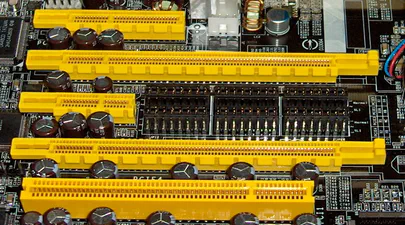Blog Posts

Running Open WebUI and Ollama on Ubuntu 22.04 for a Local ChatGPT Experience
Introduction Open WebUI and Ollama are powerful tools that allow you to create a local chat experience using GPT models.
Read More
Using Linux Kernel Tiering with Compute Express Link (CXL) Memory
In this blog post, we will walk through the process of enabling the Linux Kernel Transparent Page Placement (TPP) feature with CXL memory mapped as NUMA nodes using the system-ram namespace.
Read More
Understanding Compute Express Link (CXL) and Its Alignment with the PCIe Specifications
How CXL Uses PCIe Electricals and Transport Layers CXL utilizes the PCIe infrastructure, starting with the PCIe 5.
Read More
A Practical Guide to Identify Compute Express Link (CXL) Devices in Your Server
In this article, we will provide four methods for identifying CXL devices in your server and how to determine which CPU socket and NUMA node each CXL device is connected.
Read More
An Introduction to Generative Prompt Engineeering
Introduction Over the past few years, there has been a significant explosion in the use and development of large language models (LLMs).
Read More
How To Map a CXL Endpoint to a CPU Socket in Linux
When working with CXL Type 3 Memory Expander endpoints, it’s nice to know which CPU Socket owns the root complex for the endpoint.
Read More
Linux NUMA Distances Explained
TL;DR: The memory latency distances between a node and itself is normalized to 10 (1.
Read More
Using Linux Kernel Memory Tiering
In this post, I’ll discuss what memory tiering is, why we need it, and how to use the memory tiering feature available in the mainline v5.
Read MoreCategories
Tags
- Active-Memory
- AI
- Arcade
- Artificial Intelligence
- Book
- Boot
- Bootable-Usb
- C
- C-2
- ChatGPT
- Clflushopt
- Cloud
- Compute Express Link
- Cpu
- Custom-Kernel
- CXL
- Daxctl
- Debugging
- Development
- Device-Mapper
- Dm-Writecache
- Dram
- Edge
- Esxi
- Featured
- Fedora
- Frequency
- Generative Prompt Engineering
- Git
- Governor
- Gpg
- Gpt
- Gpt-3
- Gpt-4
- Grafana
- Ipmctl
- Java
- Kernel
- Kvm
- Linux
- Linux-Volume-Manager
- Lvm
- Machine Learning
- MAME
- Memory-Tiering
- Microsoft
- Movdir64b
- Mysql
- Napkin Math
- Ndctl
- Numa
- Nvdimm
- Ollama
- Open WebUI
- Optane
- PCIe
- Percona
- Performance
- Persistent Memory
- Pmdk
- PMem
- Powersave
- Programming
- Prometheus
- Prompt Engineering
- Qemu
- Server
- Tiered-Memory
- Ubuntu
- Vmware
- Vmware-Esxi
- Vpmem
- Vsphere
- Website
- Window
- Windows
- Windows-Server
- Working-Set-Size
- Wss